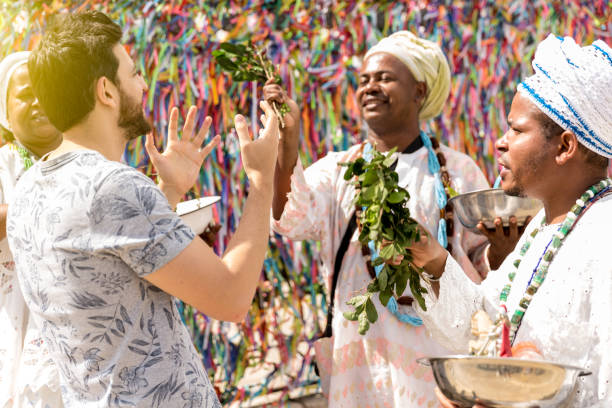Local Traditions
Cultural Practices: Understanding and Celebrating Diverse Cultural Traditions and Rituals
Cultural practices are the bedrock of human identity, encompassing a rich tapestry of traditions, rituals, and customs that vary widely across different communities and societies. These practices not only reflect the unique history and values of a culture but also play a significant role in bringing people together and preserving heritage. This guide delves into diverse cultural traditions and rituals, offering insights into their significance and how they are celebrated.
1. Festivals and Celebrations: Joyful Expressions of Culture
Festivals and celebrations are vibrant expressions of cultural identity, often marked by communal gatherings, festive activities, and traditional performances. They provide a window into the cultural values and historical events that shape a community.
Examples of Cultural Festivals
- Carnival (Brazil): A world-renowned festival celebrated with parades, samba music, and elaborate costumes, highlighting Brazil’s rich cultural and musical heritage.
- Lunar New Year (China): A major traditional festival that marks the beginning of the lunar calendar, featuring dragon dances, fireworks, and family reunions.
Key Aspects of Festivals and Celebrations
- Parades and Processions: Colorful displays featuring traditional costumes, music, and dance.
- Traditional Foods: Special dishes and culinary traditions that vary by region and festival.
- Cultural Performances: Music, dance, and theater that showcase local artistry and heritage.
2. Rites of Passage: Marking Significant Life Transitions
Rites of passage are ceremonies that commemorate important transitions in a person’s life, such as birth, coming of age, marriage, and death. These rituals often involve specific cultural practices and symbolisms.
Notable Rites of Passage
- Baptism (Christianity): A sacramental ceremony that marks the initiation of an individual into the Christian faith, often involving water and prayer.
- Sami Reindeer Herding (Sápmi): Traditional rites of passage for Sami youth, including reindeer herding and other cultural practices that signify maturity and responsibility.
Key Elements of Rites of Passage
- Ceremonial Traditions: Specific rituals, prayers, and activities that symbolize the transition.
- Community Participation: The involvement of family and community members in the ceremony.
- Symbolic Acts: Actions or objects that represent the significance of the transition, such as gifts, rituals, or blessings.
3. Religious Practices: Spiritual Beliefs and Devotions
Religious practices are integral to many cultures, reflecting spiritual beliefs, values, and rituals that guide worship and daily life. These practices often involve specific ceremonies, observances, and religious artifacts.
Examples of Religious Practices
- Hajj (Islam): An annual pilgrimage to Mecca, which is a fundamental aspect of Islamic faith and involves a series of rituals performed over several days.
- Diwali (Hinduism): Known as the Festival of Lights, Diwali celebrates the victory of light over darkness with rituals involving lamps, fireworks, and prayers.
Key Features of Religious Practices
- Rituals and Ceremonies: Acts of worship, prayer, and meditation performed according to religious guidelines.
- Sacred Texts and Symbols: Use of religious texts and symbols to convey spiritual teachings and beliefs.
- Festive Observances: Special events and activities that commemorate religious festivals and milestones.
4. Traditional Arts and Crafts: Preserving Cultural Heritage
Traditional arts and crafts are essential components of cultural practices, reflecting the artistic skills and creativity of a community. They include various forms of visual art, textiles, and handcrafted items.
Examples of Traditional Arts and Crafts
- Māori Carvings (New Zealand): Intricate wood carvings that depict ancestral stories and cultural symbols of the Māori people.
- Japanese Ikebana: The art of flower arrangement that emphasizes simplicity, balance, and harmony, reflecting Japanese aesthetics and philosophy.
Key Aspects of Traditional Arts and Crafts
- Artistic Techniques: Specific methods and materials used to create cultural artifacts and artworks.
- Symbolic Meanings: The cultural significance and stories conveyed through art and craftsmanship.
- Cultural Preservation: Efforts to maintain and pass down traditional artistic practices and skills to future generations.
5. Oral Traditions: Sharing Stories and Knowledge
Oral traditions are a vital means of preserving and transmitting cultural knowledge, history, and values through storytelling, songs, and proverbs. They serve as a dynamic way to connect with cultural heritage and community wisdom.
Examples of Oral Traditions
- African Griots: Storytellers who preserve and share history, genealogies, and cultural tales through spoken word and music.
- Australian Aboriginal Dreamtime Stories: Mythological stories that explain the origins of the world, creation, and the cultural practices of Aboriginal Australians.
Key Features of Oral Traditions
- Storytelling: The art of narrating tales and historical events in an engaging and memorable manner.
- Songs and Chants: Musical elements that accompany storytelling and enhance cultural expression.
- Community Engagement: Participation of community members in preserving and performing oral traditions.
Conclusion
Cultural practices encompass a rich array of traditions, rituals, and ceremonies that reflect the diverse identities and values of communities around the world. From lively festivals and significant rites of passage to religious observances, traditional arts, and oral traditions, these practices offer invaluable insights into human heritage and collective experience.
Engaging with and understanding these cultural practices not only fosters appreciation for the richness of human diversity but also promotes respect and connection between different cultures. Embrace the opportunity to explore and celebrate these traditions, and contribute to the ongoing preservation and celebration of cultural heritage.

